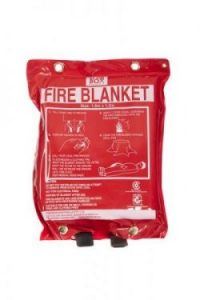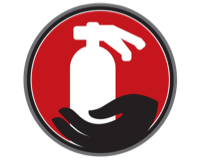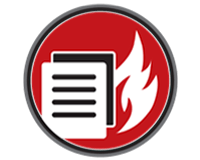
In the event of a small-scale fire outbreak in Albany, a business or company’s first layer of protection is to use fire extinguishers.
What is an incipient fire
An incipient fire is a small, slow-moving fire. This is still considered a manageable type of fire. Thus, in these early stages, a standard fire extinguisher is effective against overcoming an incipient fire.
International regulations are very strict when it comes to fire fighting equipment. For this reason, most fire extinguishers are classified based on the type of fire they can contain or extinguish. Of course, there are also slight differences per country, but unanimously everyone adheres to high safety standards, even here in Albany NZ.
Now with fire extinguishers, research and fire tests were carried out to establish their effectiveness and discharge distances, and this established scale is known as their performance rating.
To be specific: In New Zealand, there are six classifications of fire according to fireandemergency.nz.
Fires are classified according to the type of fuel they’re burning and the class they’re in.
We’ve talked about this before, here at Fireco, yet it wouldn’t hurt to remind you and even tell others about these types of fires. With knowledge, comes safety. The more everyone knows, the safer we all are as a community in Albany.
So what are the fire classifications?
- Class A (Wood paper plastics)
- Class B (Flammable & combustible liquids)
- Class C (Flammable gases)
- Class D (Fires involving combustible metals)
- Class E (Electrically energised equipment)
- Class F (Cooking oils and fats)

Now What Makes Fire Extinguishers in Albany Effective?
Albany fire extinguishers come in a variety of shapes and sizes, including free-standing models, wheeled models, and wall-mounted models supported by brackets. Extinguishers that can be wheeled are heavier and utilised in industrial environments. It is common for fire extinguishers to be stored in those clear “Break glass” or “Break in case of emergency” boxes, which are conveniently accessible in common areas in the event of an emergency, Alternatively they will be on a wall ready to detach. Either way they must be prominent, visible and ready to go.
In most cases, fire extinguishers work by forcing an extinguishing substance (or technically a medium) out of a nozzle using gas pressure in the upper part of the cylinder.
Fire extinguishers in Albany can also be classified according to the type of extinguishing material they have inside – worth noting – all are affordable!
Water as a fire extinguisher medium is due to its low cost and widespread availability. It makes an ideal extinguishing agent. All three sides of the fire triangle- oxygen, heat, and fuel – can be fought with water because of its physical qualities.
Powder fire extinguishers put out fires primarily by interfering with the chemical reaction that is taking place and by snuffing out the supply of oxygen that is being consumed by the flames.
Foam is effective since it acts as blanket and a barrier between the flames and the fuel surface. The cooling properties of the foam are then transferred to the fuel and to any metal surfaces that may be nearby. Sodium bicarbonate and aluminum sulfate are two common compounds found in foam fire extinguishers.
Carbon dioxide (CO2) is a clean extinguishant that does not leave any residue behind, and fire extinguishers that contain CO2 contain pure carbon dioxide. It is approved for use on live electrical equipment and can put out fires involving flammable liquids of class B, such as gasoline, oil, and solvents. Carbon dioxide puts out fires by displacing oxygen, which is the same as saying that it removes the oxygen component from the fire triangle. The carbon dioxide that is released by the extinguisher at very low temperatures also helps to lower the temperature of the fuel that is igniting the fire.
Halon is a liquefied gas that is used to put out fires by chemically breaking the chain reaction that occurs during combustion. Halon is short for halogenated hydrocarbon, which is its full scientific name. It does not conduct electricity and is referred to as a “clean agent” because it does not leave any trace behind once it has been discharged. It is recommended to use Halon Fire Extinguishers when dealing with sensitive, expensive, and delicate items such as computers, electrical equipment, videotapes, analog media, and film, as well as engines in cars, ships, and planes.

Now that we know that Albany NZ fire extinguishers are categorised by the sort of hazard they are designed to extinguish. You can now take the next step forward, if it’s time for you to purchase a fire extinguisher for your business in Albany, you can count on Fireco.
We are Albany’s top firefighting and fire safety specialist. Call us at Fireco 0800 101 232
Albany fire extinguishers are available to order. We’re here to help you and your staff be prepared for fire and safety crises at any moment. Email us at info@fireco.co.nz





















